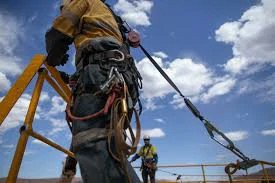


 349,500 Offered Certificates
349,500 Offered Certificates
 24/7 Online Training
24/7 Online Training
 Money Back Guarantee
Money Back Guarantee
 Fully Accredited Courses
Fully Accredited Courses

Created at: 22-02-2025 14:44
In industries where employees are required to work at heights, safety is paramount. The advances in working at heights safety equipment are remarkable, reducing incident rates and ensuring compliance with stringent regulations. With the ever-evolving landscape of technology, companies are leveraging new equipment and training methods to foster safer working environments. This article delves into innovative harness technology, self-retracting lifelines, and the transformative role of virtual reality (VR) in training programs.
Modern harnesses have seen a significant transformation, moving beyond mere restraint devices to becoming sophisticated safety essential tools. Here are some noteworthy innovations:
A leading construction company recently integrated smart harness technology in their operations. The harnesses are embedded with a GPS locator and a two-way communication system, allowing constant monitoring of workers on-site, especially in locations prone to falls.
Self-retracting lifelines (SRLs) have raised the bar for fall protection by simplifying the equipment used and enhancing safety measures:
A manufacturing facility implemented SRLs, resulting in a 40% reduction in fall-related incidents. The new SRLs provided workers with the freedom to move while ensuring safety was not compromised.
One of the most exciting developments in working at heights safety is the advent of virtual reality training simulations. These immersive experiences offer several advantages:
After adopting VR training, a corporation reported a significant decrease in accidents related to working at heights. Workers claimed they felt more prepared and confident when faced with real-life work scenarios.
As technology continues to advance, the potential for further innovations in working at heights safety equipment is limitless. Here are some trends to watch:
The importance of staying updated with the latest innovations in working at heights safety cannot be overstated. Not only do these advancements contribute to a safer working environment, but they also ensure compliance with safety standards and regulations. Investing in modern equipment and training solutions can significantly reduce workplace accidents and promote a culture of safety.
To stay compliant and ensure your team is well-equipped with the latest safety knowledge and equipment, consider enrolling in certified training programs. Explore the Working at Heights Course for comprehensive insights and hands-on experience in safety practices. For more information, contact us at [email protected].